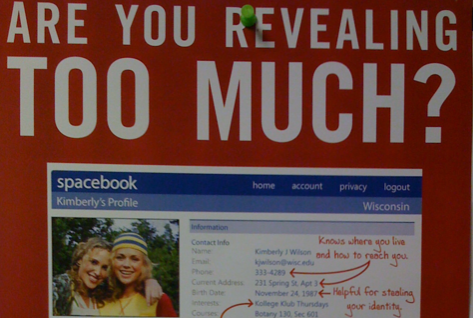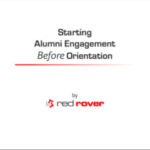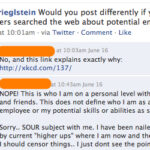Working in San Francisco with the Red Rover programming team, so this will be quick.
Schools used to base their value on ownership of the books and the information. Now many are sharing what they know for free. As a group, schools are beginning to value sharing over hoarding.
The old frame was that schools transferred the value (knowledge) to students. This value was given currency: a degree.
Here’s the key quote from Umair:
Yesterday, we build advantage on owning assets. Tomorrow, we will build advantage by sharing assets.
Selling students a degree does not fulfill the responsibility of schools. It’s not enough. To prepare college students for success in the world in which they will live, schools must teach the students to share. Schools much teach students how to be public; public in the world of digital.
It’s not enough to own the knowledge/degree. The value creation occurs when the knowledge is shared. We live in a time where this sharing is infinitely scalable.
And this is the focus of most digital sharing “education” I come across on campuses:
Sharing and public could be vague and this conversation can go in many directions. Feel free to comment and take it there. There is a lot to be said about educational ethics, citizenship, and societal change. At the moment, I’m very focused on the practical. In my little corner of the conversation, I can be very specific:
This means: don’t give them e-portfolio’s in a .pdf file. (It’s not searchable and searchable = sharing. They cannot connect or be found with .pdfs.)
Do let them aggregate their involvement and interactions in tools they control. Teach them delicious.com, use Disqus for your campus community, use google groups and show them how to use google reader to keep track of their content.
This means: don’t just teach them to be scared of drinking pictures or stalking on Facebook. Fear is not a strategy.
Do teach them to manage and grow their positive digital identity. Google is the new resume.
This means: don’t restrict your students (especially your student leaders!) to closed, password-protected, organizational systems.
Do teach them to blog. Encourage them to connect their public blogs at conferences and create a personal learning network of their peers.
Here’s the whole post to give you some context and spark thinking:
Edge Patterns: From Owning to Sharing**: ”
Hertz imitates Zipcar and makes cars shareable – nice move. This is a killer example of a radical edge pattern: from ownership to sharing. Yesterday, we build an advantage on owning assets. Tomorrow, we will build an advantage by sharing assets.
Hertz’s move is, of course, potentially disruptive in a recessionary environment, because micro chunking cars offer significant efficiency gains across the value chain. But the really interesting part is this.
We talked not so long ago about bringing new DNA to Detroit**. One of the questions we discussed was: how could we bring open-source principles, like sharing, to a moribund auto industry? This is a nice start.
The largest economic point is this. The pressure for sharing in a hyperconnected world is too strong to resist. It’s not a fringe effect, relegated to geeks and hippies: it is one of the foundations, as we’ve been noting, of next-generation value creation.
And it is doubly vital in a world where the fabric of value creation is breaking apart.
”
(Via Umair Haque**.)




